The Jewish Quarter of Cordoba
Thursday, June 8, 2017
|
This is the depiction of the Juderia or Jewish Quarter in the Seville and Andalusia guidebook. After touring the Mezquita including the Cathedral, we took a walking tour of the old town and had lunch there. I learned more about it from Andalucia .com. | 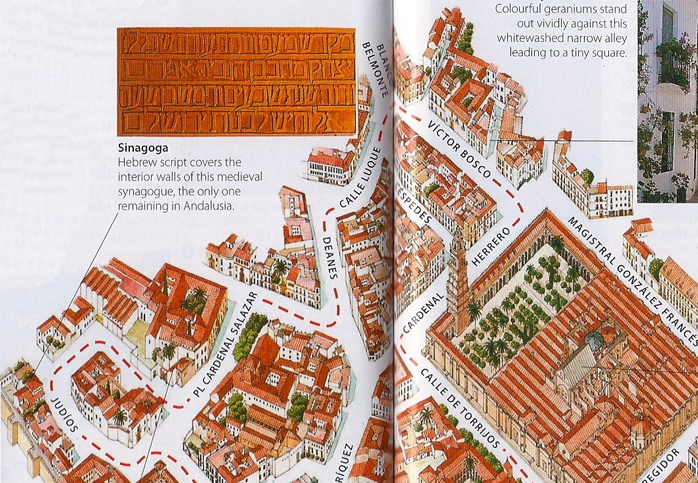 |
As we were leaving the Cathedral, Brenda got this excellent perspective of the bell tower and the Plaza of Oranges. 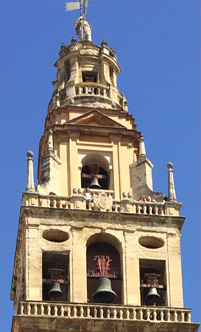 I liked the idea of the Plaza de las Naranjas as the place where the worshippers did ceremonial washings before they entered to pray. Both here and in Seville, the Plaza of Oranges was retained into the Christian era. |  |
 | Having finished our Cathedral tour, our group headed out through the north gate in view of the Torre del Alminar, the 305ft bell tower. It was originally built in 957ad as a minaret during the Moslem era, but later enveloped with this baroque bell tower. We walked by the orange trees of the Plaza de las Naranjas. |
We headed down the street labeled Victor Bosco on the sketch above, but it is obviously much narrower than that suggested by the sketch. Even given that, it was one of the wider lanes we traveled on this tour of the old Jewish Quarter. The area was very crowded with visitors, so we had to watch carefully to keep with our group. | 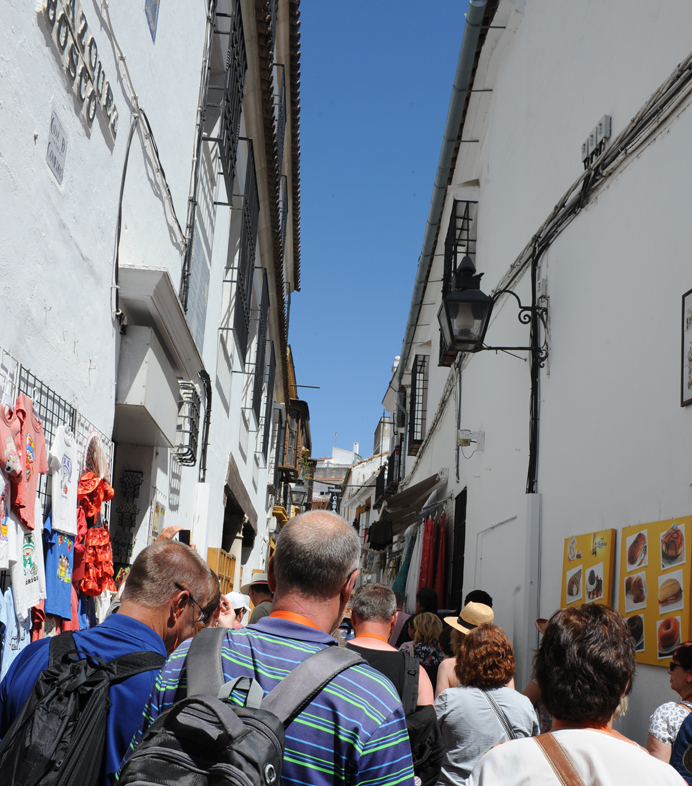 |
 | The narrow streets were clean, lined with attractive shops, and there were potted flowers up on the walls. There were also potted flowers on the walls in the little patio restaurants. |
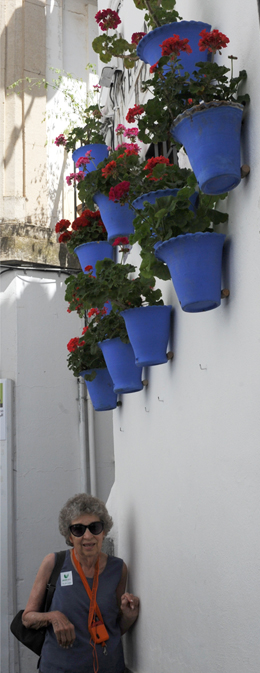 |  |
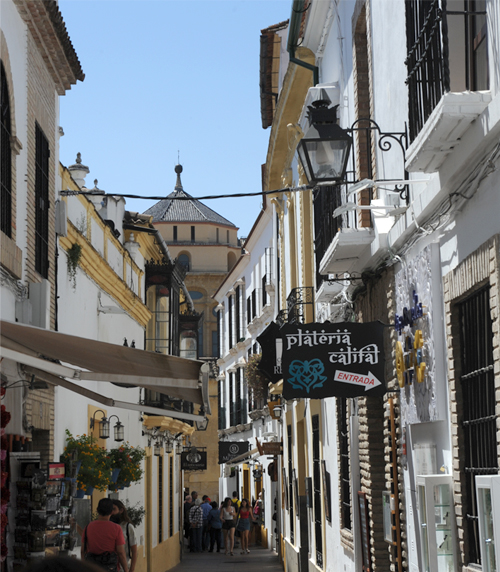 | 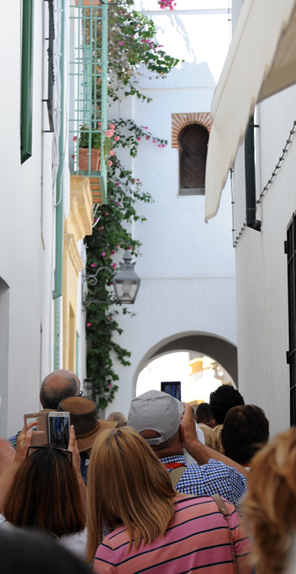 |
 | 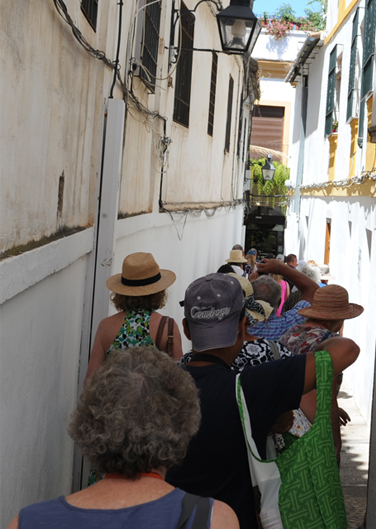 |
 | I took this picture thinking it might be one of the philosophers for whom Cordoba is famous, but Mohamed Al Gafequi was a physician and oculist. He was an expert in the operation of cataract and treatment of eye diseases. He was the author of a treatise on ophthalmology, called 'Guide to the oculist,' whose original manuscript is preserved in the library of the Monastery of the Escorial. He was doing cataract surgery in the 12th century. 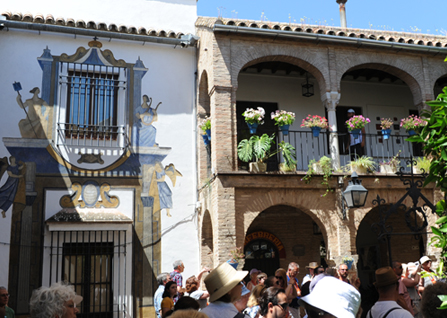 |
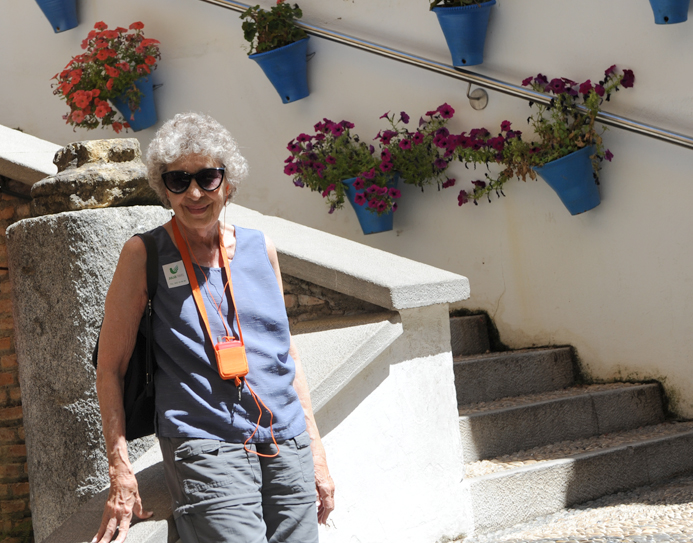 | This plaza was very nice and had flowers on the stairway and on the second floor as well. |

 | 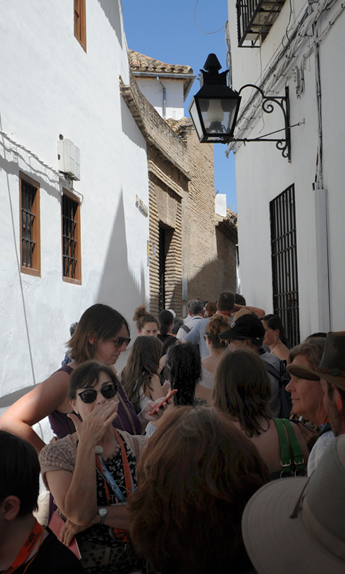 | The way got narrower and then we hit a full traffic jam as we approached the small synagogue "La Sinagoga". The synagogue is very small and only one group at a time could enter it. This synagogue was constructed around 1315 and is in the Mudejar-style, meaning that it was constructed by the Moorish craftsmen. Many Moorish craftsmen continued to build after the Christian 'reconquista' of the country. Only three Mudejar-style synagogues remain in Spain, the other two in Toledo. |
When our turn came, our guide described the uniqueness of this synagogue, the only one of its kind in Andalucia. |  |
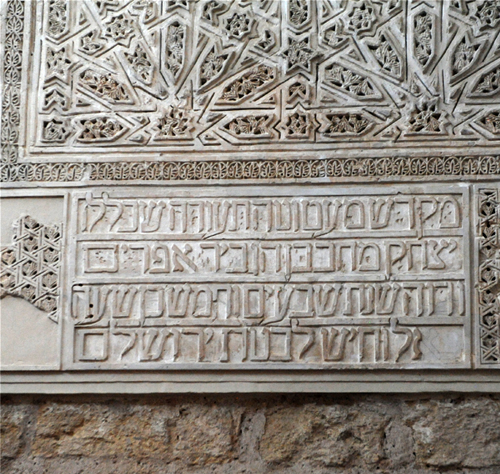 | 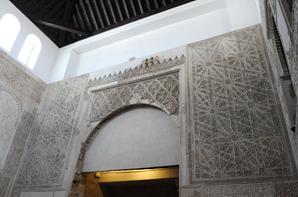 It was fascinating to see that the hebrew text was so well preserved on the wall of this one-room synagogue. The guidebooks say that not only this synagogue, but most of the area through which we had been walking is virtually unchanged since Moorish times. |
We reached the statue of Maimonides, a world-famous 12th-century Jewish philosopher from Cordoba. Richard Howe had mentioned him to me before we came. |  |
 | With the formal tour over, there was some free time for shopping. And the shops were very nice. 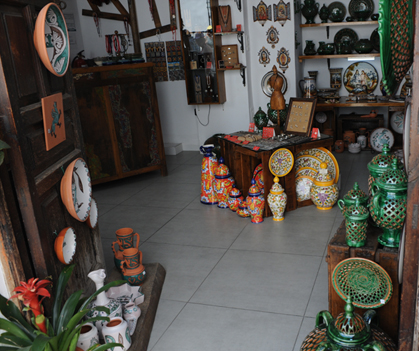 |
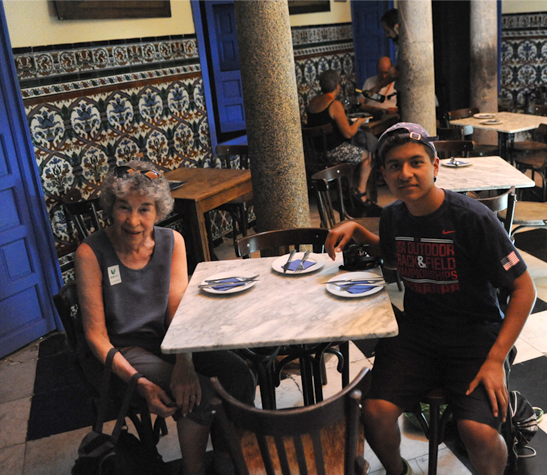 | We had lunch at a nice restaurant among the shops. Chris could ask around for us, and talked to a Spanish-speaking guy and followed him to this restaurant. There was real tile on the wall, and the support pillar beside Brenda below appears to be solid granite. We may be eating in a thousand-year-old building. |
 | 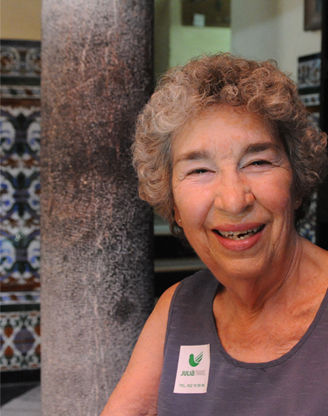 |
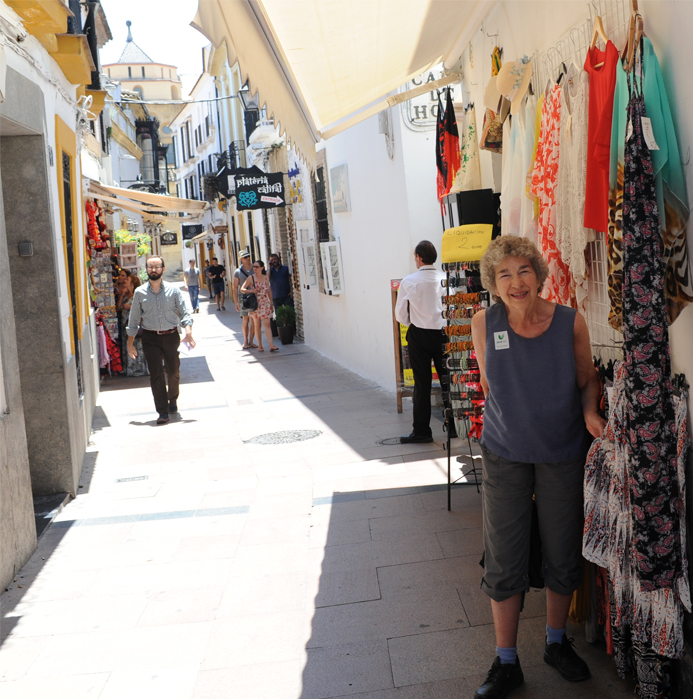 | Brenda had a little time to shop on this nice street in view of the Cathedral. The crowds were not as pressing now. |
We talked about the conditions that would lead them to put the rows of stone buildings so close together, but that was over a thousand years ago. You didn't have any vehicles, and you could certainly get a horse down this lane. | 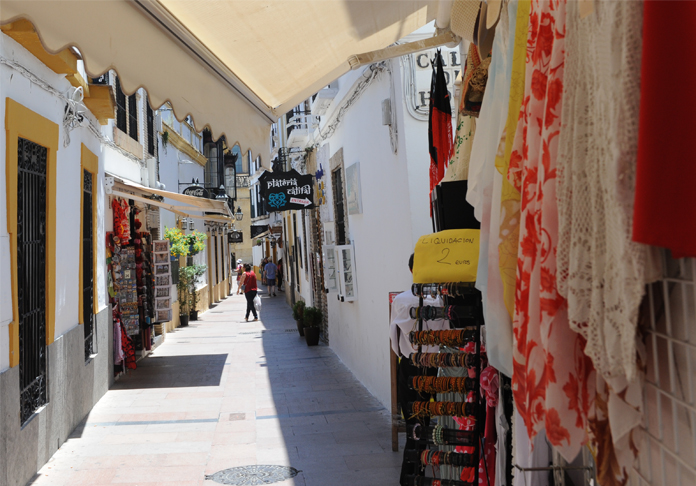 |
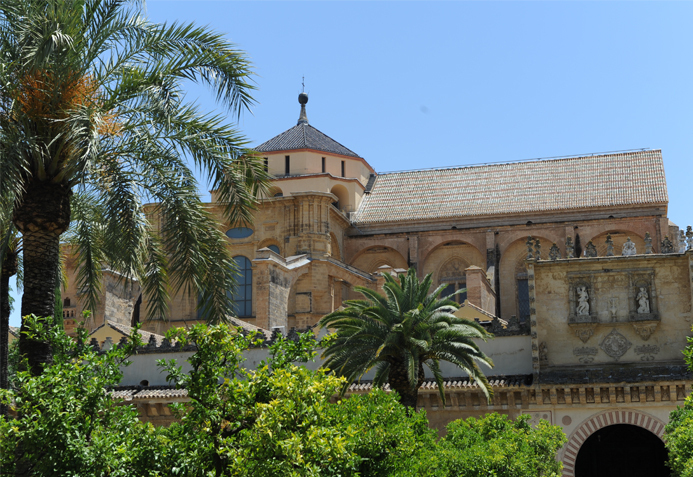 | It was time to start moving back toward our departure point, so we walked back toward the Cathedral. |
Back past the Mezquita and the Palacio Episcopal toward the St. Raphael monument. | 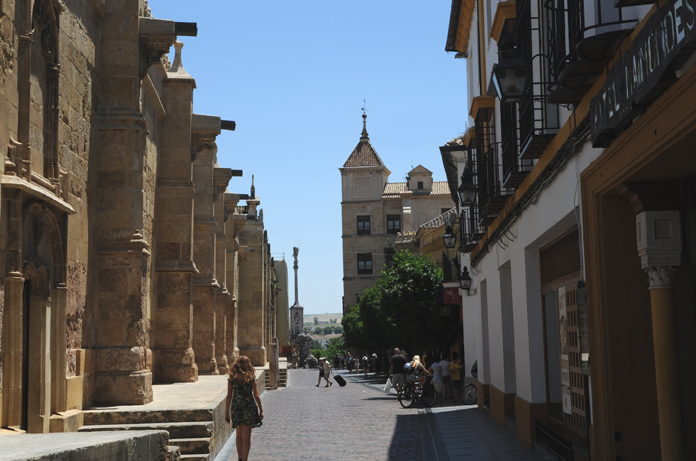 |
 | A telephoto shot of three of the bells in the bell tower as we passed. |
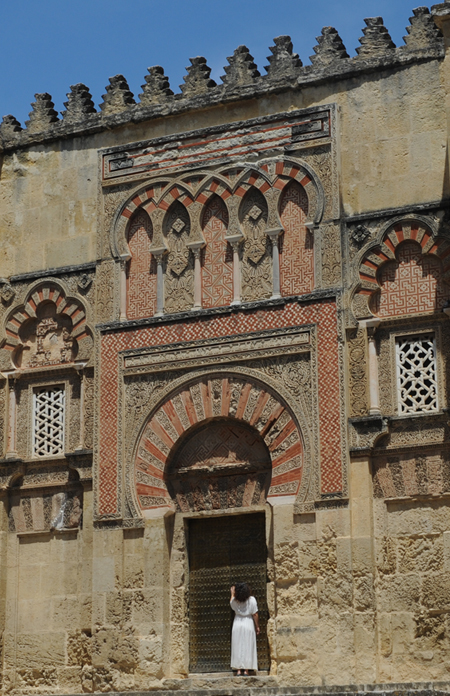 | 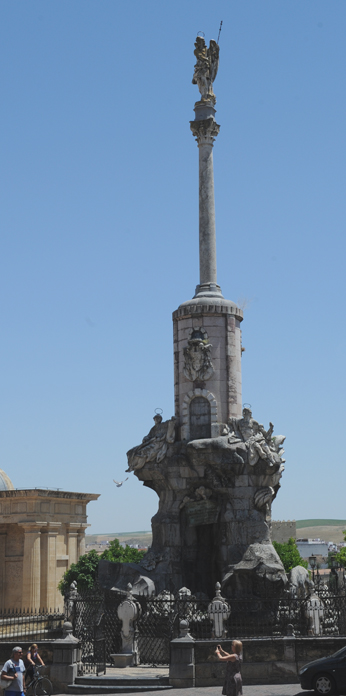 |
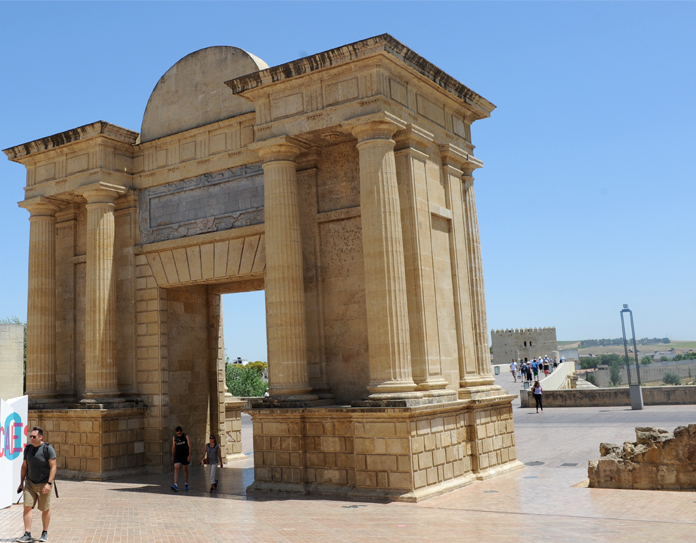 | Toward the Puerte del Puente, the door of the bridge. |
The Roman Bridge and the Torre de la Calahorra | 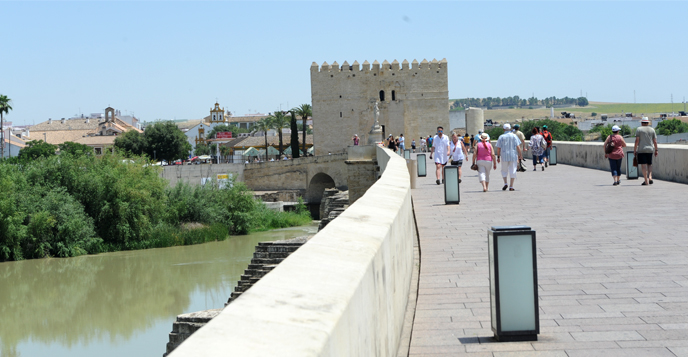 |
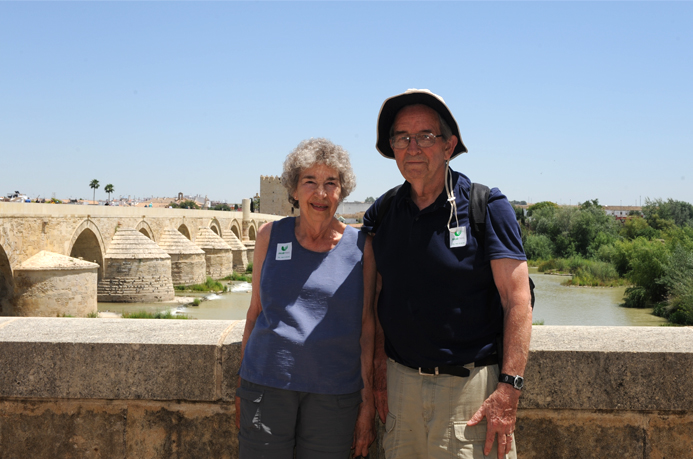 | Standing next to the Guadalquivir River with a backdrop of the Roman Bridge which has foundations dating to about 185AD. |
| The journey homeward |
2017